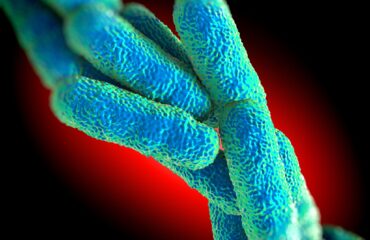
Indoor Environmental Assessments – The 3 C’s
Indoor environmental professionals (IEPs) are a well-rounded lot. They are trained in building science, construction techniques, mechanical systems, and how to perform healthy building inspections. As with every profession, IEPs rely on guidance documents with definitions and criteria for discussing scenarios they commonly encounter. Indoor Environmental Assessments – the 3 C’s – covers three very important definitions for mold inspectors, insurance adjusters, and industrial hygienists.
For all 3 C’s – Condition, Class, OR Category – lower numbers are better!
Condition – Indoor Environments Relative to Mold
- Condition 1 = “normal fungal ecology” = an indoor environment that may have settled spores, fungal fragments or traces of actual growth whose identity, location and quantity are reflective of a normal fungal ecology for a similar indoor environment.
- Condition 2 = “settled spores” = an indoor environment which is primarily contaminated with settled spores that were dispersed directly or indirectly from a Condition 3 area, and which may have traces of actual growth.
- Condition 3 = “actual growth” = an indoor environment contaminated with the presence of actual mold growth and associated spores. Actual growth includes growth that is active or dormant, visible or hidden.
These Conditions help categorize indoor environments based on their relative “moldiness.” Conditions are defined by the Institute of Inspection, Cleaning, and Restoration Certification, in the IICRC S520 Standard and Reference Guide for Professional Mold Remediation. This document has become the de facto “standard of care” for mold remediation.
Class – Quantifying Water Damage
- Class 1 = “least damage” = water losses that affect only part of a room or area, or losses with lower permeance/porosity materials (e.g., plywood, particle board, structural wood, VCT, concrete). Little or no wet carpet or padding.
- Class 2 = “large damage” = water losses that affect an entire room or carpet and cushion. Water has wicked up walls 12″-24,” and moisture remains in structural materials.
- Class 3 = “greatest amount of water” = ceilings, walls, insulation, carpet and sub-floor in the entire area are saturated. Water usually originates from above in Class 3 scenarios.
- Class 4 = “specialty drying” = deep pockets of saturation in very low permeance/porosity materials such as hardwood, plaster, brick, concrete or stone. Includes scenarios where HVAC or other equipment will require drying and restoration.
Classes of water damage are defined by the type of materials exposed to water, and the extent of the water damage. Classes are defined in the IICRC S500 Standard and Reference Guide for Professional Water Damage Restoration. This document has become the de facto “standard of care” for water damage restoration.
Category – Source Water Contamination Levels
- Category 1 = “clean water” = broken supply lines, tub or sink overflows with no contaminants, appliance malfunctions involving water supply lines, melting ice or snow, falling rainwater, broken toilet tanks, toilet bowls that do not contain contaminants or additives, etc. (Previously known as “clear water.”) Category 1 water can quickly degrade into category 2 or 3.
- Category 2 = “gray water” = discarded from dishwashers, washing machines, overflows from toilet bowls with some urine (no feces), sump pump failures, seepage due to hydrostatic pressure, broken aquariums, punctured water beds, etc.
- Category 3 = “black water” = sewage or other contaminated water sources including toilet backflows that originate beyond the trap, flooding from seawater, ground surface water and rising water from rivers or streams, etc.
These water Categories differentiate types of water that may be encountered during indoor environmental assessments. A mold remediator’s response and scope of work may be radically affected depending on the category of water that lead to the problem. Categories are defined in the IICRC S500 Standard and Reference Guide for Professional Water Damage Restoration.
Conditions of fungal ecology, Classes of water damage, and Categories of water are critical elements of a professional indoor environmental assessment. The 3 C’s help mold inspectors, industrial hygienists, and restoration professionals speak the same language.
We hope to run more blog posts in a series entitled Indoor Environmental Assessments, so please keep posted!



This information is very accurate, and helpful.